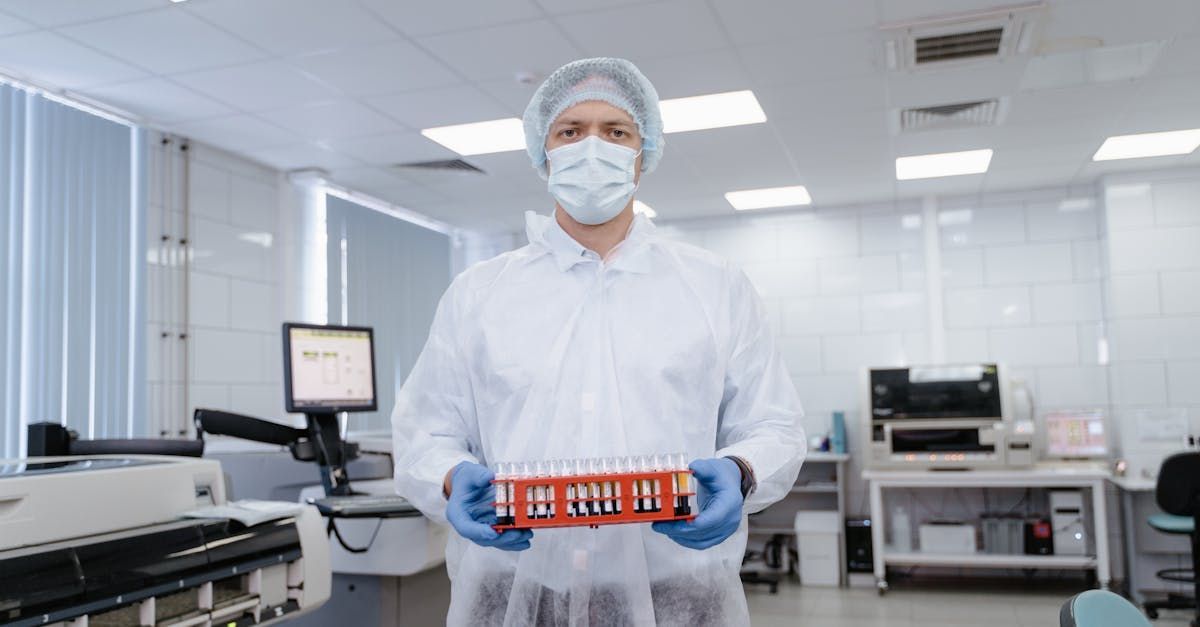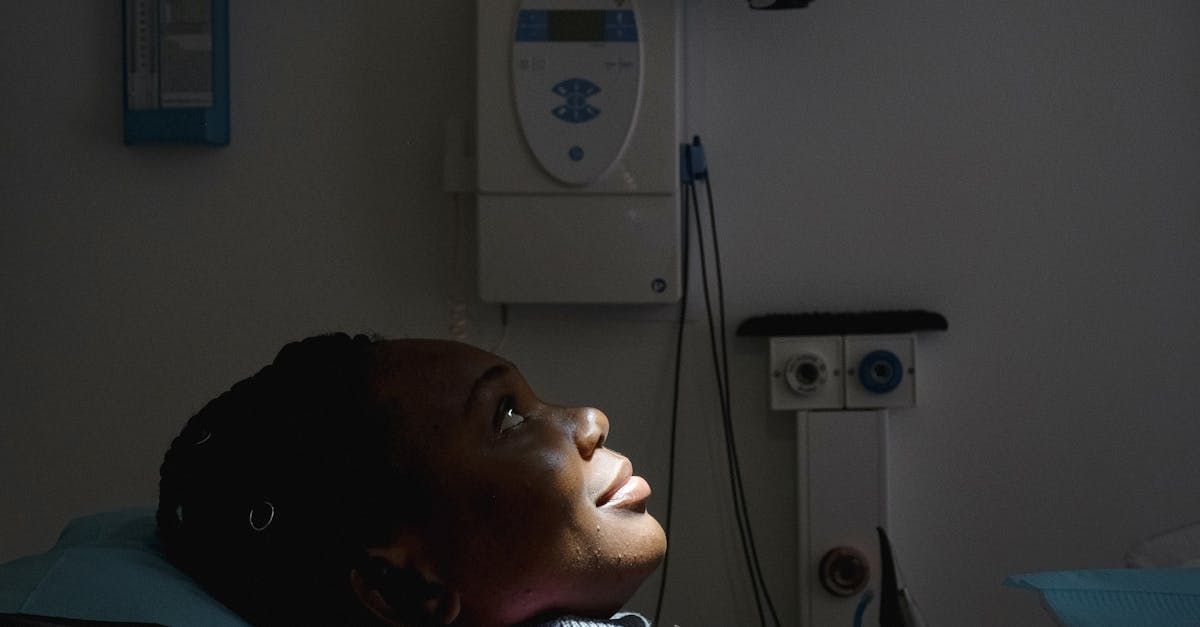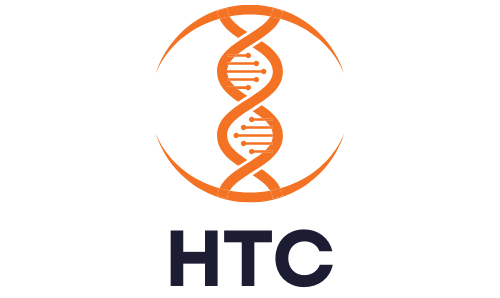Investing in HealthTech for Aging Populations
As the global population continues to age, the demographic landscape is undergoing a significant transformation. By 2050, it is estimated that one in six people worldwide will be over the age of 65, with the number of individuals aged 80 and older expected to triple. This shift presents both challenges and opportunities, particularly in the realm of healthcare. Aging populations are more susceptible to chronic conditions, cognitive decline, and mobility issues, necessitating innovative solutions to improve their quality of life and reduce healthcare costs.
HealthTech, encompassing a broad range of technologies from telemedicine and wearable devices to AI-driven diagnostics and personalized medicine, plays a crucial role in addressing these needs. By leveraging advanced technologies, HealthTech can enhance disease prevention, early diagnosis, and personalized treatment plans, ultimately leading to better health outcomes for older adults.
This blog aims to explore the vast investment opportunities within the HealthTech sector focused on aging populations. We will delve into the current trends, emerging technologies, and key players driving innovation in this space, providing insights for investors looking to capitalize on this growing market.
The Demographic Shift
The world is witnessing an unprecedented demographic shift as life expectancy increases and birth rates decline. According to the United Nations, the global population aged 65 and over is projected to nearly double from 9% in 2019 to 16% by 2050. In absolute numbers, this means an increase from 703 million to 1.5 billion older adults. This rapid aging phenomenon is particularly pronounced in regions such as Europe, North America, and parts of Asia, where the proportion of elderly individuals is growing faster than in other parts of the world.
Statistics and Projections on Global Aging Trends
- United Nations Projections: By 2050, 1 in 6 people in the world will be over the age of 65, up from 1 in 11 in 2019.
- Regional Variations: In Europe and North America, the percentage of the population aged 65 and over is expected to rise to 27% by 2050.
- Super-Aged Societies: Countries like Japan, Italy, and Germany are already classified as super-aged, with over 20% of their population aged 65 and older.
Economic and Social Impacts of an Aging Population
The economic implications of an aging population are profound. As the workforce shrinks and the dependency ratio increases, governments face the dual challenge of maintaining economic growth while ensuring adequate support for their aging citizens. This demographic shift impacts various sectors:
- Healthcare Costs: An aging population leads to higher healthcare expenditures due to increased prevalence of chronic diseases and long-term care needs.
- Pension Systems: Strain on pension systems and social security as more individuals enter retirement age, with fewer workers contributing to these funds.
- Labor Market: Potential labor shortages and the need for policies that support older individuals staying in the workforce longer.
Socially, the aging population poses challenges related to social isolation, ageism, and the need for age-friendly communities. There is also a growing demand for services that support independent living and enhance the quality of life for older adults.
Healthcare Challenges Specific to Elderly Populations
Elderly populations face unique healthcare challenges that require targeted interventions:
- Chronic Diseases: Higher prevalence of conditions such as heart disease, diabetes, arthritis, and dementia.
- Polypharmacy: Increased risk of adverse drug reactions due to multiple medications being prescribed simultaneously.
- Mobility Issues: Greater incidence of falls and fractures, leading to the need for mobility aids and rehabilitation services.
- Mental Health: Higher rates of depression, anxiety, and cognitive decline, necessitating comprehensive mental health care.
HealthTech Solutions for Aging Populations
As the aging population grows, so does the need for innovative HealthTech solutions tailored to the unique healthcare challenges faced by older adults. These solutions range from telemedicine and wearable devices to AI-driven diagnostics and personalized medicine. Below, we explore some of the key HealthTech innovations that are revolutionizing elderly care.
Types of HealthTech Innovations Targeting Aging Populations
- Telemedicine: Telemedicine enables elderly patients to access healthcare services remotely, reducing the need for travel and making it easier to manage chronic conditions. Virtual consultations can provide timely medical advice, routine check-ups, and follow-up care, all from the comfort of the patient’s home.
- Wearable Devices: Wearable health devices such as smartwatches and fitness trackers monitor vital signs, physical activity, and sleep patterns. These devices can alert caregivers and healthcare providers to potential health issues before they become critical.
- AI-Driven Diagnostics: Artificial intelligence (AI) is being used to develop diagnostic tools that can detect early signs of diseases such as Alzheimer's and Parkinson's. AI algorithms analyze medical images, genetic data, and patient history to provide accurate and early diagnoses, leading to better outcomes.
- Remote Monitoring: Remote monitoring systems use sensors and connected devices to track health metrics like blood pressure, glucose levels, and heart rate in real time. This data is transmitted to healthcare providers who can intervene promptly if abnormalities are detected.
- Medication Management: Technologies such as smart pill dispensers and medication reminder apps help elderly patients adhere to their prescribed treatment plans, reducing the risk of medication errors and improving health outcomes.
- Mobility Aids: Innovations in mobility aids, including advanced wheelchairs, exoskeletons, and robotic walking assistants, enhance the independence and mobility of elderly individuals, improving their quality of life.
Examples of Technologies Improving Elderly Care
- Remote Monitoring: Companies like Healthsense provide remote monitoring solutions that use sensors to track daily activities and health metrics of elderly individuals. These systems can detect falls, monitor sleep patterns, and alert caregivers to potential health issues.
- Medication Management: MedMinder offers a smart pill dispenser that reminds patients to take their medications and notifies caregivers if a dose is missed. The device also has built-in telemedicine capabilities, allowing for remote consultations.
- Mobility Aids: The ReWalk Robotics exoskeleton is a wearable robotic suit that enables individuals with lower limb disabilities to walk again. This technology is particularly beneficial for elderly patients recovering from strokes or spinal cord injuries.
Case Studies of Successful HealthTech Solutions for Seniors
- Case Study: Philips Lifeline: Philips Lifeline is a personal emergency response system that provides 24/7 access to help for elderly individuals. The system includes wearable pendants with fall detection capabilities, which automatically alert emergency services if a fall is detected. This solution has significantly reduced response times in emergencies, leading to better outcomes for elderly users.
- Case Study: Omron HeartGuide: The Omron HeartGuide is a wearable blood pressure monitor that looks like a regular wristwatch. It provides continuous blood pressure monitoring and tracks other health metrics like physical activity and sleep quality. This device empowers elderly patients to manage their cardiovascular health more effectively, leading to early intervention and better disease management.
- Case Study: Intuition Robotics' ElliQ: ElliQ is an AI-driven companion robot designed to engage elderly individuals in meaningful conversations and activities. It provides medication reminders, health tips, and connects users with their families and healthcare providers. ElliQ has been shown to reduce feelings of loneliness and improve overall well-being among elderly users.
Market Opportunities and Trends
As the global population ages, the market for HealthTech solutions tailored to the needs of elderly individuals is experiencing significant growth. This burgeoning sector offers substantial opportunities for investors looking to capitalize on the increasing demand for innovative healthcare technologies.
Current Market Size and Growth Projections
The HealthTech market catering to aging populations is rapidly expanding. According to recent market analyses, the global HealthTech market was valued at approximately $189 billion in 2020 and is projected to grow at a compound annual growth rate (CAGR) of 17.7% from 2021 to 2028. Specifically, the segment focused on aging populations, including telemedicine, remote monitoring, wearable devices, and AI-driven diagnostics, is expected to see substantial growth.
- Telemedicine: The telemedicine market, valued at $55.9 billion in 2020, is expected to reach $218.5 billion by 2027, driven by the increasing adoption of virtual healthcare services among the elderly.
- Wearable Devices: The market for wearable health devices is projected to grow from $27.91 billion in 2020 to $74.03 billion by 2026, as these devices become more sophisticated and widely adopted for elderly care.
- AI-Driven Diagnostics: The AI in healthcare market is anticipated to grow from $6.7 billion in 2020 to $45.2 billion by 2026, with significant advancements in diagnostics and personalized medicine targeting older adults.
Key Players and Startups in the Aging HealthTech Space
Several established companies and innovative startups are leading the charge in developing HealthTech solutions for aging populations. Some of the key players include:
- Philips Healthcare: Known for its advanced telehealth and remote monitoring solutions, Philips Healthcare has been at the forefront of providing technologies that improve elderly care.
- Medtronic: Medtronic offers a range of wearable devices and remote monitoring systems designed to manage chronic conditions prevalent among older adults.
- Omron Healthcare: Omron’s HeartGuide wearable blood pressure monitor is a prime example of a device that empowers elderly patients to take control of their health.
In addition to these established companies, numerous startups are making significant strides in this sector:
- Intuition Robotics: Developer of ElliQ, an AI-driven companion robot designed to improve the well-being of elderly individuals through social engagement and health management.
- GrandPad: A tablet designed specifically for seniors, offering simplified interfaces and features to connect elderly users with their families and healthcare providers.
- CarePredict: Provides AI-powered wearable technology that tracks the daily activities and health patterns of elderly individuals, alerting caregivers to potential health issues.
Trends Driving Innovation and Investment in This Sector
Several key trends are driving innovation and attracting investment in the HealthTech sector for aging populations:
- Increased Adoption of Telehealth: The COVID-19 pandemic accelerated the adoption of telehealth services, demonstrating their value in providing accessible healthcare to elderly individuals. This trend is expected to continue as telehealth becomes an integral part of elderly care.
- Advancements in AI and Machine Learning: AI and machine learning technologies are revolutionizing diagnostics and personalized medicine. These advancements enable early detection of diseases, tailored treatment plans, and better management of chronic conditions for elderly patients.
- Integration of IoT in Healthcare: The Internet of Things (IoT) is transforming healthcare by enabling continuous monitoring of elderly patients through connected devices. This integration provides real-time data and insights, facilitating proactive and preventive healthcare.
- Focus on Preventive Care: There is a growing emphasis on preventive care and wellness programs designed to keep elderly individuals healthy and independent. Technologies that promote active aging and monitor health metrics are gaining traction.
- Government Initiatives and Support: Governments worldwide are recognizing the importance of supporting the aging population through technology. Initiatives and funding aimed at fostering innovation in elderly care are providing a boost to the HealthTech sector.
Investing in HealthTech solutions for aging populations not only addresses a critical societal need but also presents a lucrative opportunity for investors. By staying attuned to market trends and supporting innovative technologies, investors can play a pivotal role in shaping the future of elderly care while realizing significant returns. In the next section, we will provide practical investment strategies and considerations for those looking to enter this promising market.
Investment Strategies
Investing in HealthTech solutions for aging populations requires a strategic approach to identify promising opportunities and mitigate potential risks. This section outlines key strategies for investors looking to capitalize on the growing demand for innovative elderly care technologies.
Identifying Promising HealthTech Companies and Technologies
- Market Research: Conduct thorough market research to identify companies that are at the forefront of innovation in HealthTech for aging populations. Look for businesses with strong R&D capabilities, a track record of successful product launches, and a clear focus on elderly care.
- Technology Assessment: Evaluate the technologies being developed by these companies. Focus on solutions that address critical healthcare challenges for the elderly, such as chronic disease management, mobility aids, and remote monitoring. Assess the technological maturity, ease of use, and potential for widespread adoption.
- Company Financials: Examine the financial health of potential investment targets. Look for companies with solid revenue growth, manageable debt levels, and strong cash flow. Financial stability is crucial for sustaining long-term innovation and market expansion.
- Partnerships and Collaborations: Identify companies that have established partnerships with healthcare providers, government agencies, and other key stakeholders. Collaborations can enhance the credibility and reach of HealthTech solutions, facilitating market penetration and growth.
Factors to Consider When Investing in HealthTech for Aging Populations
- Market Demand: Ensure there is a significant and growing demand for the HealthTech solutions being offered. The increasing aging population worldwide creates a substantial market, but it’s essential to understand the specific needs and preferences of this demographic.
- Regulatory Environment: The healthcare sector is heavily regulated, and compliance with regulations is critical. Assess the regulatory landscape in the target markets and ensure that the companies you invest in have robust regulatory compliance strategies. This includes adherence to data privacy laws, medical device regulations, and telehealth standards.
- Scalability: Evaluate the scalability of the HealthTech solutions. Scalable technologies can be expanded to serve larger populations and multiple regions, enhancing the potential for revenue growth. Look for solutions that can be easily integrated into existing healthcare systems and have the capacity to handle increasing demand.
- Innovative Edge: Focus on companies that demonstrate a commitment to continuous innovation. The HealthTech sector is dynamic, and staying ahead requires ongoing R&D and the ability to adapt to emerging trends and technologies.
- User Adoption: Consider the user-friendliness of the technology. Solutions that are intuitive and easy to use are more likely to be adopted by elderly individuals and their caregivers. High adoption rates are crucial for the success and sustainability of HealthTech products.
Diversification Strategies to Mitigate Risks
- Diversified Portfolio: Build a diversified portfolio that includes a mix of established companies and emerging startups in the HealthTech sector. This approach balances the potential for high returns from innovative startups with the stability of more established firms.
- Geographic Diversification: Invest in HealthTech companies operating in different geographic regions. Diversification across regions can mitigate risks associated with local market fluctuations and regulatory changes.
- Sector Diversification: While focusing on HealthTech for aging populations, consider diversifying across various sub-sectors such as telemedicine, wearable devices, AI-driven diagnostics, and mobility aids. This spreads risk and increases exposure to multiple growth areas within the broader HealthTech market.
- Staged Investments: Implement staged investments, where you gradually increase your investment as the company demonstrates progress and achieves key milestones. This strategy reduces the risk of significant losses from early-stage investments.
- Due Diligence: Conduct rigorous due diligence before making any investment. This includes evaluating the company’s leadership team, understanding the competitive landscape, and assessing the potential risks and rewards.
Risks and Challenges
While investing in HealthTech for aging populations offers significant opportunities, it also comes with inherent risks and challenges that investors must navigate. Understanding these potential pitfalls and developing strategies to mitigate them is crucial for successful investment.
Potential Risks Associated with Investing in HealthTech for Aging Populations
- Regulatory Hurdles: The healthcare sector is one of the most regulated industries. HealthTech companies must comply with a multitude of regulations regarding medical device approvals, data privacy, and telehealth standards. Changes in regulatory policies can impact the approval and adoption of new technologies, potentially delaying market entry and affecting revenue.
- Technology Adoption: While innovative technologies can offer substantial benefits, their adoption among elderly populations can be slow. Factors such as technological literacy, accessibility, and trust in new technologies can influence the rate at which elderly individuals embrace these solutions. Low adoption rates can hinder the success of otherwise promising technologies.
- Market Competition: The HealthTech sector is highly competitive, with numerous companies vying for market share. Emerging startups must compete with established players that have more resources and market presence. This competitive landscape can pose a risk to new entrants and affect their growth prospects.
Challenges Specific to Elderly Care Technologies
- User-Friendliness: Technologies designed for elderly care must prioritize ease of use. Elderly individuals may have limited experience with digital devices, and complex interfaces can deter them from using these technologies. Ensuring that HealthTech solutions are intuitive and accessible is a significant challenge.
- Data Privacy Concerns: HealthTech solutions often involve the collection and analysis of sensitive personal health data. Protecting this data from breaches and ensuring compliance with data privacy regulations such as GDPR and HIPAA is crucial. Failure to address data privacy concerns can lead to legal repercussions and loss of trust among users.
- Physical and Cognitive Limitations: Elderly individuals may face physical and cognitive limitations that affect their interaction with HealthTech devices. Designing solutions that accommodate these limitations requires careful consideration and user-centered design approaches.
Strategies for Overcoming These Challenges
- Navigating Regulatory Hurdles:
- Engage Early with Regulators: Establish open communication with regulatory bodies early in the development process to understand requirements and streamline approvals.
- Compliance Expertise: Invest in compliance expertise to navigate complex regulatory landscapes and ensure that products meet all necessary standards.
- Adaptability: Stay informed about regulatory changes and be prepared to adapt quickly to new requirements.
- Enhancing Technology Adoption:
- Education and Training: Provide comprehensive education and training for elderly users and their caregivers to build confidence and facilitate adoption.
- User-Centered Design: Involve elderly individuals in the design process to ensure that technologies meet their needs and are easy to use.
- Pilot Programs: Implement pilot programs to demonstrate the benefits of new technologies and encourage wider adoption.
- Addressing Market Competition:
- Differentiation: Focus on differentiating your products by offering unique features and superior user experiences.
- Strategic Partnerships: Form strategic partnerships with healthcare providers, insurers, and other stakeholders to enhance market reach and credibility.
- Continuous Innovation: Maintain a commitment to continuous innovation to stay ahead of competitors and address evolving market needs.
- Ensuring User-Friendliness:
- Simplified Interfaces: Design interfaces that are simple, intuitive, and easy to navigate, with large buttons and clear instructions.
- Accessibility Features: Incorporate accessibility features such as voice commands, adjustable font sizes, and screen readers to accommodate various needs.
- User Testing: Conduct extensive user testing with elderly individuals to identify and address usability issues.
- Protecting Data Privacy:
- Robust Security Measures: Implement robust security measures such as encryption, secure authentication, and regular security audits to protect user data.
- Transparency: Be transparent about data collection practices and obtain explicit consent from users.
- Compliance Programs: Develop comprehensive data privacy compliance programs to ensure adherence to relevant regulations and build trust with users.
The Role of Policy and Regulation
Regulations and government policies play a critical role in shaping the landscape of HealthTech innovations, especially those targeting aging populations. Understanding the regulatory environment and government initiatives can provide valuable insights for investors and help navigate potential challenges.
Overview of Regulations Affecting HealthTech for Aging Populations
- Medical Device Regulations: HealthTech products often fall under medical device regulations, which vary by region. In the United States, the FDA oversees the approval and monitoring of medical devices, ensuring they meet safety and efficacy standards. Similarly, the European Medicines Agency (EMA) and other regional regulatory bodies enforce stringent guidelines for medical devices.
- Data Privacy Laws: Protecting personal health information is paramount. Regulations such as the General Data Protection Regulation (GDPR) in Europe and the Health Insurance Portability and Accountability Act (HIPAA) in the United States set strict standards for data privacy and security. Compliance with these laws is essential to avoid legal repercussions and build trust with users.
- Telehealth Regulations: Telehealth services must adhere to specific regulations concerning the delivery of remote healthcare. These include licensing requirements for healthcare providers, reimbursement policies, and standards for telehealth technology. Regulations can vary significantly between countries and even within regions of the same country.
- Aging-Specific Policies: Many countries have policies specifically designed to address the healthcare needs of their aging populations. These policies can include guidelines for long-term care facilities, support for home-based care, and standards for elderly-friendly medical devices.
Government Initiatives and Support for Elderly Care Innovations
Governments worldwide are recognizing the importance of supporting HealthTech innovations that cater to aging populations. Several initiatives and funding programs aim to foster the development and adoption of these technologies:
- Research Grants and Funding: Governments often provide grants and funding opportunities for research and development in HealthTech. For example, the National Institutes of Health (NIH) in the United States offers grants for projects that advance the understanding and treatment of age-related conditions.
- Public-Private Partnerships: Collaborations between government agencies and private companies can accelerate the development and deployment of HealthTech solutions. These partnerships leverage the strengths of both sectors to address the complex needs of elderly care.
- Incentive Programs: Some governments offer financial incentives to encourage the adoption of HealthTech innovations. These can include tax credits, subsidies, and reimbursement schemes for telehealth services and medical devices designed for the elderly.
- Policy Frameworks: Comprehensive policy frameworks that prioritize elderly care can create a conducive environment for HealthTech innovations. For example, the World Health Organization's Global Strategy and Action Plan on Aging and Health outlines strategic objectives to promote healthy aging and support innovations in this area.
The Impact of Policy Changes on Investment Opportunities
Policy changes can significantly influence investment opportunities in HealthTech for aging populations. Investors need to stay informed about regulatory developments and government initiatives that can impact the market:
- Regulatory Approvals: Streamlined regulatory approval processes can expedite the market entry of HealthTech products, enhancing investment prospects. Conversely, stringent regulations can create barriers to entry and increase development costs.
- Reimbursement Policies: Favorable reimbursement policies for telehealth services and elderly care technologies can drive adoption and market growth. Investors should monitor changes in reimbursement frameworks to identify potential opportunities and risks.
- Data Privacy and Security: Strengthening data privacy regulations can impact the development and deployment of HealthTech solutions. Companies that prioritize data security and comply with regulations will be better positioned to succeed in the market.
- Aging-Specific Legislation: Legislation that supports elderly care, such as funding for long-term care facilities or incentives for home-based healthcare, can create a favorable environment for HealthTech investments. Investors should look for regions with proactive aging-specific policies.
Case Studies of Successful Investments
Examining case studies of companies that have successfully addressed the needs of aging populations provides valuable insights into the potential of investing in HealthTech. These profiles highlight the growth, market impact, and returns experienced by investors, offering lessons learned from their success stories.
Profiles of Companies that Have Successfully Addressed the Needs of Aging Populations
- Philips Healthcare
- Overview: Philips Healthcare is a global leader in health technology, with a strong focus on innovations for aging populations. Their solutions include advanced telehealth services, remote monitoring systems, and user-friendly medical devices designed for elderly care.
- Growth and Market Impact: Philips' telehealth and remote monitoring solutions have seen widespread adoption, particularly during the COVID-19 pandemic, which highlighted the need for remote healthcare services. The company's market impact is significant, with a robust presence in both developed and emerging markets.
- Investor Returns: Investors in Philips Healthcare have benefited from the company's consistent growth and strong financial performance. Philips' focus on elderly care technologies has contributed to its reputation as a reliable and innovative health tech provider.
- Lessons Learned: The success of Philips Healthcare underscores the importance of developing user-friendly, scalable solutions that address critical healthcare needs. Their proactive approach to regulatory compliance and strategic partnerships has also been key to their success.
- Omron Healthcare
- Overview: Omron Healthcare specializes in home healthcare products, including the HeartGuide wearable blood pressure monitor, designed to empower elderly individuals to manage their cardiovascular health effectively.
- Growth and Market Impact: Omron's HeartGuide has received positive feedback for its ease of use and accuracy, making it a popular choice among elderly users. The product's success has reinforced Omron's position as a leader in the home healthcare market.
- Investor Returns: Omron Healthcare has provided strong returns to investors, driven by the success of its innovative products and expanding market reach. The company's commitment to improving health outcomes for the elderly has been a significant driver of its growth.
- Lessons Learned: Omron's focus on addressing specific health issues prevalent among the elderly, such as hypertension, highlights the value of targeted innovation. The company's success demonstrates the potential for significant returns by developing practical, easy-to-use solutions.
- Intuition Robotics
- Overview: Intuition Robotics is the creator of ElliQ, an AI-driven companion robot designed to enhance the well-being of elderly individuals through social engagement and health management.
- Growth and Market Impact: ElliQ has been widely praised for its ability to reduce feelings of loneliness and improve overall well-being among elderly users. The product's innovative approach to elderly care has garnered significant attention and adoption.
- Investor Returns: Investors in Intuition Robotics have seen substantial returns, as the company has successfully carved out a niche in the growing market for AI-driven elderly care solutions. Intuition Robotics has attracted substantial funding to further develop and expand its offerings.
- Lessons Learned: The success of Intuition Robotics highlights the importance of addressing the social and emotional needs of the elderly, in addition to their physical health. Their innovative use of AI to provide companionship and support showcases the potential for technology to transform elderly care.
- Notable Labs
- Overview: Notable Labs is at the forefront of personalized medicine and HealthTech innovations. Their precision medicine platform leverages advanced analytics and real-world data to predict patient outcomes and tailor treatments for aging populations.
- Growth and Market Impact: Notable Labs' approach to precision medicine has significantly impacted the market by offering tailored healthcare solutions that improve outcomes for elderly patients. Their innovative platform has gained traction in various healthcare settings, showcasing its effectiveness and scalability.
- Investor Returns: Investors in Notable Labs have seen impressive returns due to the company's consistent innovation and expanding market presence. The company's commitment to advancing elderly care through precision medicine has positioned it as a leader in the HealthTech sector.
- Lessons Learned: The success of Notable Labs highlights the importance of leveraging real-world data and advanced analytics to develop personalized healthcare solutions. Their focus on precision medicine demonstrates the potential for targeted innovation to drive significant market impact and investor returns.
Analysis of Growth, Market Impact, and Investor Returns
- Growth: Companies that have successfully addressed the needs of aging populations have demonstrated strong growth by developing innovative, user-friendly solutions that cater to the specific challenges faced by elderly individuals. Their ability to scale and expand their market reach has been a critical factor in their success.
- Market Impact: The market impact of these companies is evident in the widespread adoption of their products and services. By addressing critical healthcare needs and enhancing the quality of life for the elderly, these companies have established themselves as leaders in the HealthTech sector.
- Investor Returns: Investors in these companies have benefited from strong financial performance, driven by the success of their innovative products and expanding market presence. The focus on elderly care technologies has proven to be a lucrative investment strategy.
Lessons Learned from These Success Stories
- User-Centered Design: Successful companies prioritize user-centered design, ensuring that their products are easy to use and meet the specific needs of elderly individuals. This approach drives adoption and enhances user satisfaction.
- Targeted Innovation: Focusing on specific health challenges prevalent among the elderly, such as chronic disease management and social isolation, can lead to the development of impactful solutions with significant market potential.
- Regulatory Compliance: Proactive engagement with regulatory bodies and adherence to compliance standards are crucial for market entry and long-term success. Companies that navigate regulatory hurdles effectively can gain a competitive advantage.
- Strategic Partnerships: Forming strategic partnerships with healthcare providers, insurers, and government agencies can enhance credibility, market reach, and product adoption. Collaboration is key to scaling and sustaining growth.
- Adaptability and Continuous Innovation: The dynamic nature of the HealthTech sector requires companies to remain adaptable and committed to continuous innovation. Staying ahead of market trends and technological advancements is essential for sustained success.
Recap of the potential and importance of investing in HealthTech for aging populations
Investing in HealthTech for aging populations presents a unique and compelling opportunity. The demographic shift towards a significantly larger elderly population is reshaping the healthcare landscape, creating an urgent need for innovative solutions tailored to the specific needs of older adults. HealthTech innovations, including telemedicine, wearable devices, AI-driven diagnostics, and mobility aids, are poised to address these needs effectively.
The market for elderly-focused HealthTech is not only growing rapidly but also offers substantial returns for investors. Companies that develop user-friendly, scalable, and compliant solutions are well-positioned to thrive in this dynamic sector. Moreover, the support from government initiatives and favorable policy frameworks further enhances the potential for successful investments.
Investing in HealthTech for aging populations goes beyond financial returns; it contributes to significant societal benefits. By supporting technologies that improve the health and quality of life for elderly individuals, investors can help reduce healthcare costs, enhance independent living, and alleviate the burden on healthcare systems. These investments promote the well-being of older adults, enabling them to live healthier, more fulfilling lives.
Consider the long-term impact of these investments:
- Enhanced Healthcare Delivery: Innovative HealthTech solutions streamline healthcare delivery, making it more efficient and accessible for the elderly.
- Improved Health Outcomes: Early detection, personalized treatment plans, and continuous monitoring lead to better health outcomes and reduced hospitalizations.
- Quality of Life: Technologies that support mobility, mental health, and social engagement significantly enhance the quality of life for elderly individuals.
- Economic Savings: Preventive care and efficient management of chronic conditions can lead to substantial savings in healthcare expenditures.
The future of HealthTech for aging populations is promising, driven by ongoing advancements in technology and an increasing focus on elderly care. As the global population continues to age, the demand for innovative healthcare solutions will only intensify. This growing market offers vast investment potential for those willing to navigate its complexities and capitalize on emerging trends.
Key trends to watch in the future include:
- Integration of AI and Machine Learning: AI will continue to revolutionize diagnostics, treatment planning, and personalized care for the elderly.
- Expansion of Telehealth Services: The adoption of telehealth is expected to grow, providing convenient and efficient healthcare solutions for older adults.
- Development of Smart Homes: Technologies that create safer, more adaptable living environments for the elderly will gain traction.
- Focus on Preventive Care: Emphasis on preventive health measures and wellness programs will drive innovation in HealthTech for aging populations.
Investors who recognize the potential of these trends and invest in forward-thinking HealthTech companies can expect not only financial rewards but also the satisfaction of contributing to a healthier, more supportive world for aging populations.
In conclusion, investing in HealthTech for aging populations is a strategic decision that offers substantial returns, both financially and socially. By supporting technologies that address the unique needs of older adults, investors can play a crucial role in shaping the future of healthcare, ensuring that it meets the demands of a rapidly aging global population. The time to invest in this transformative sector is now, as it holds the promise of significant growth and profound impact.










